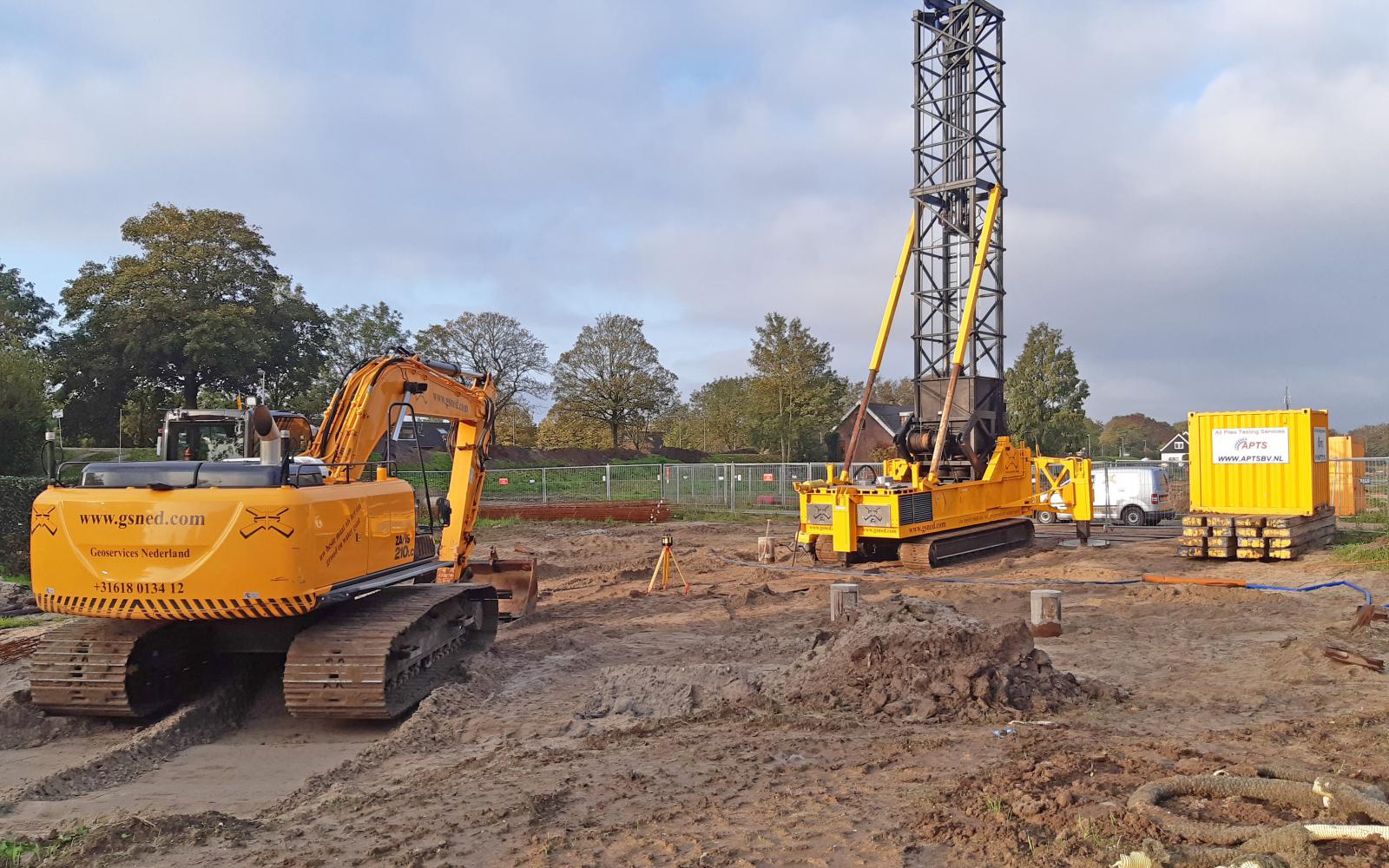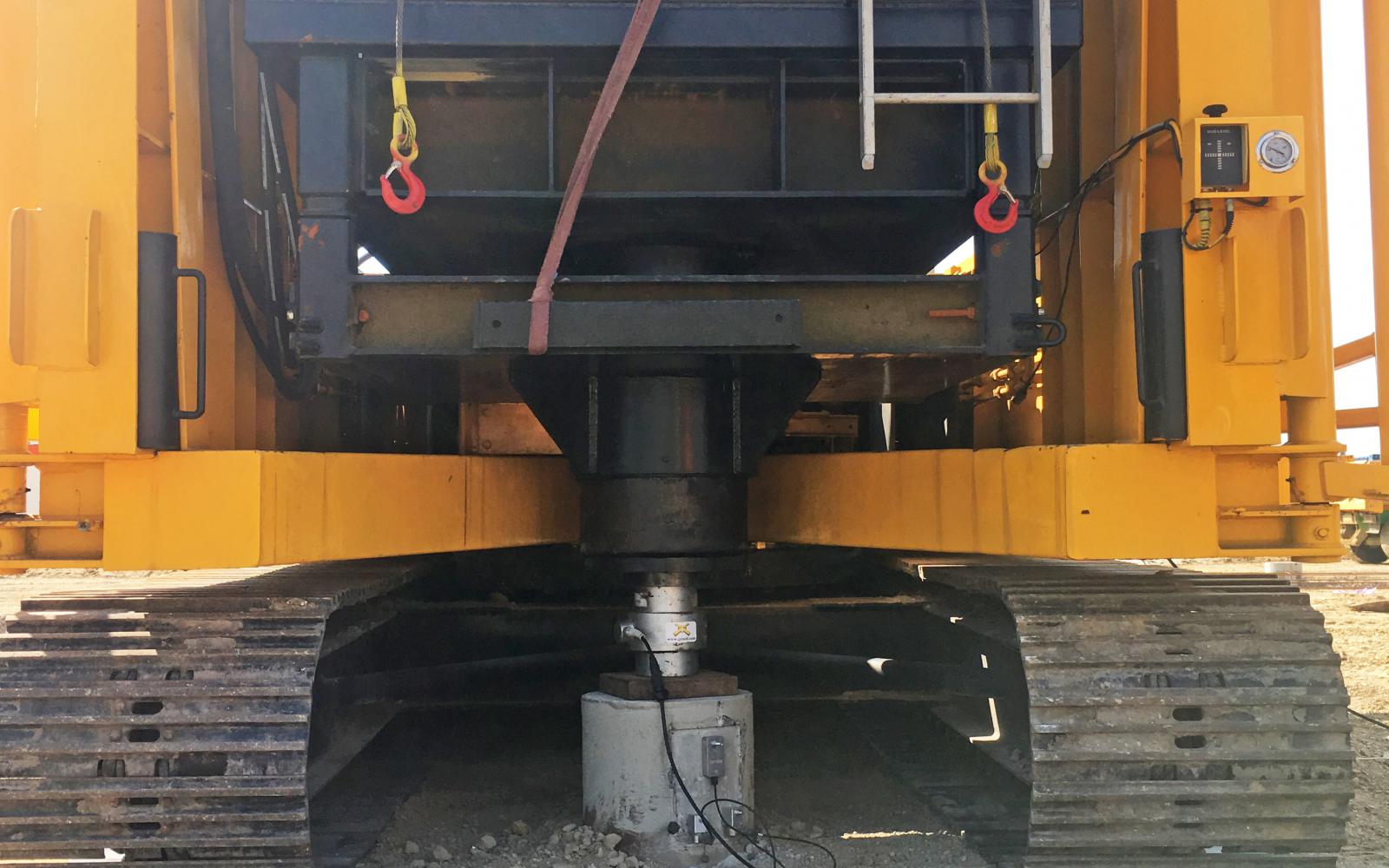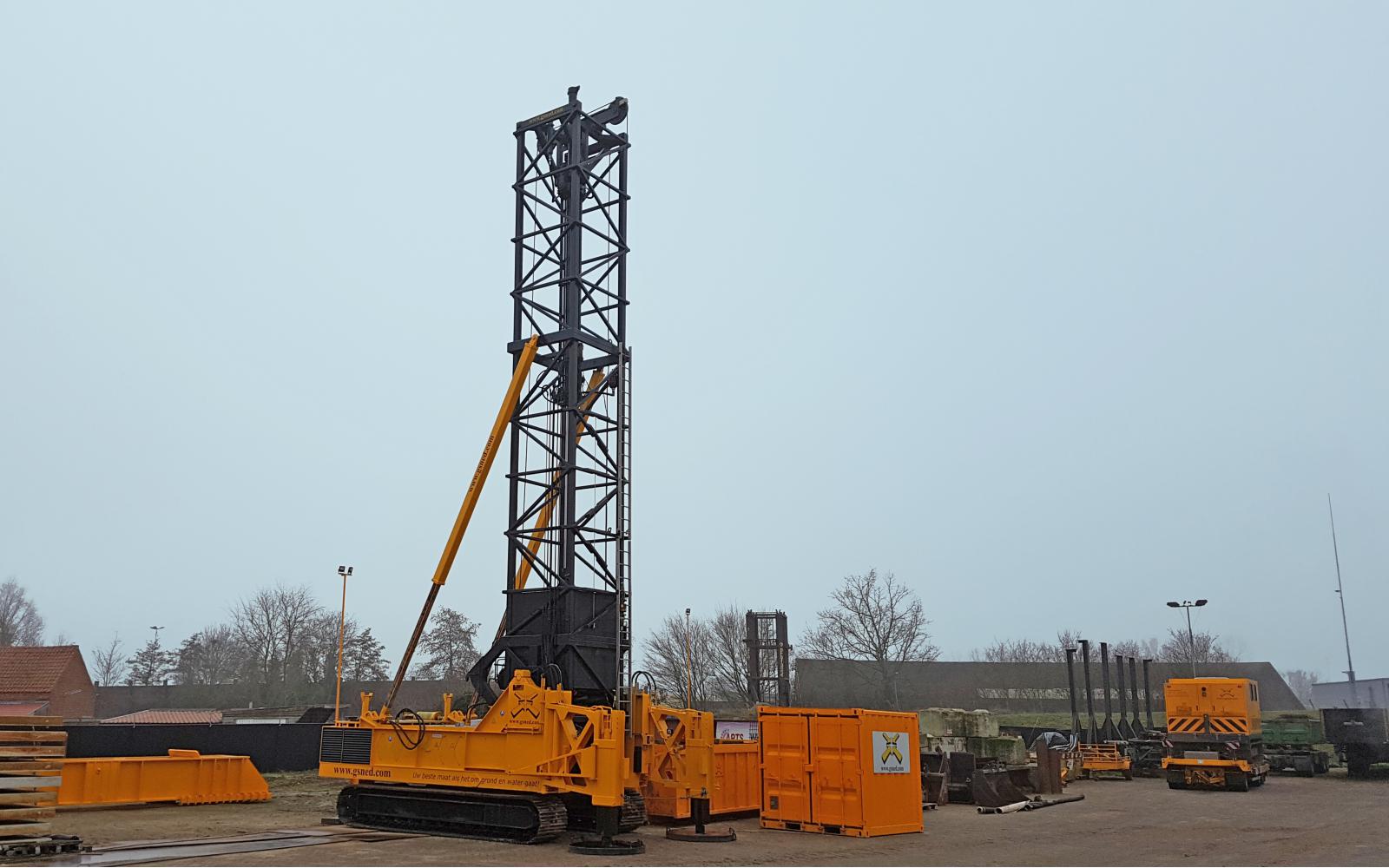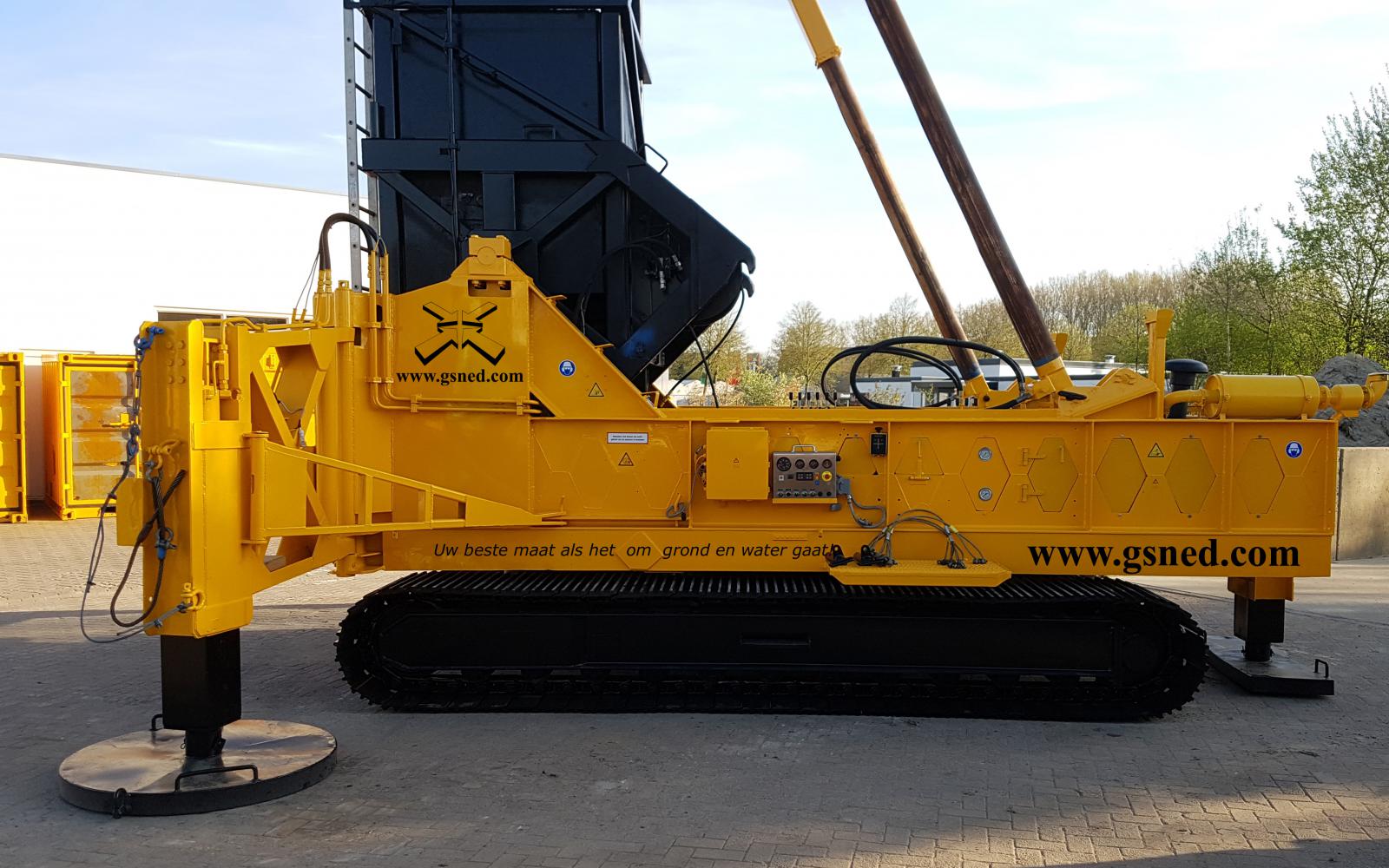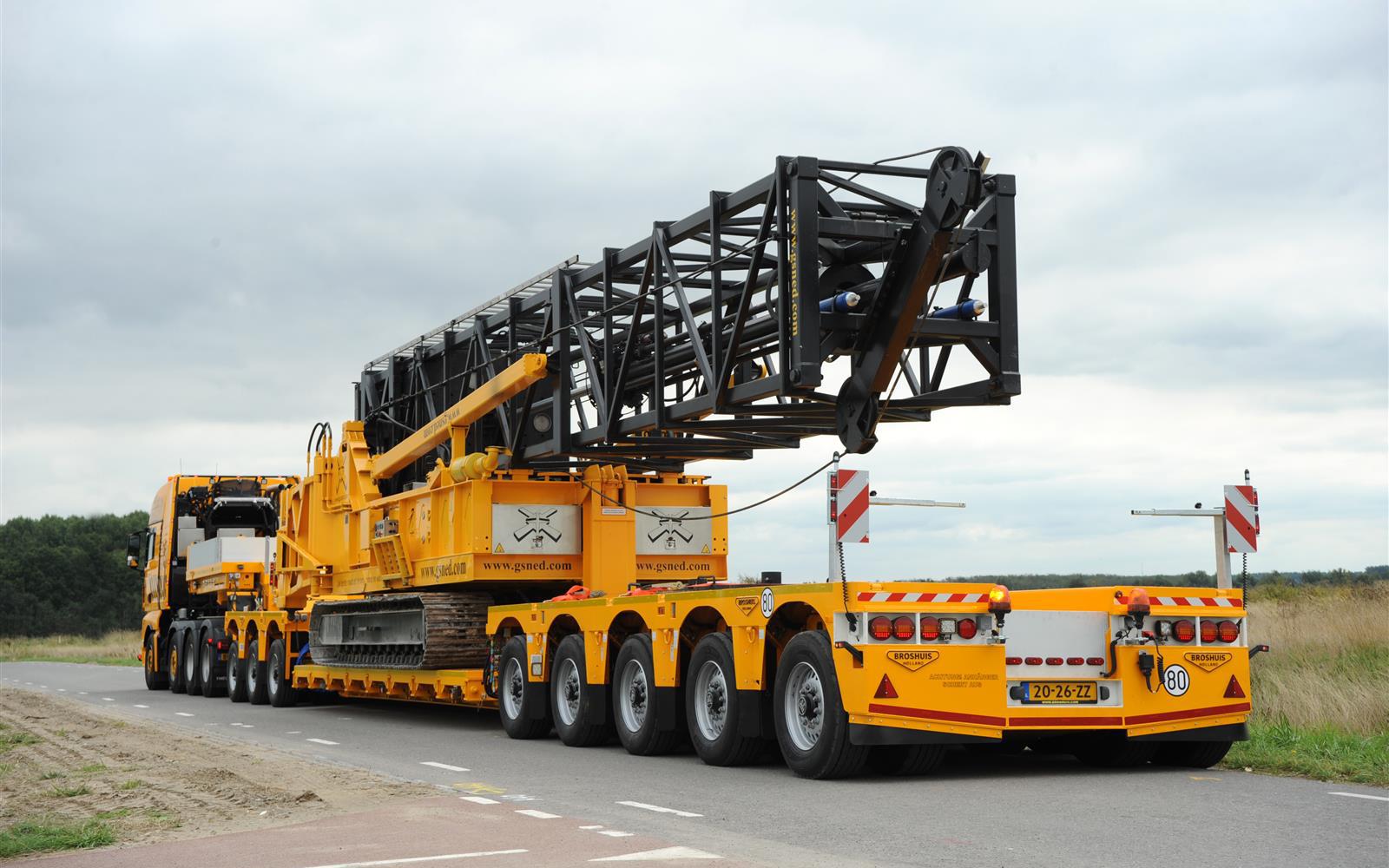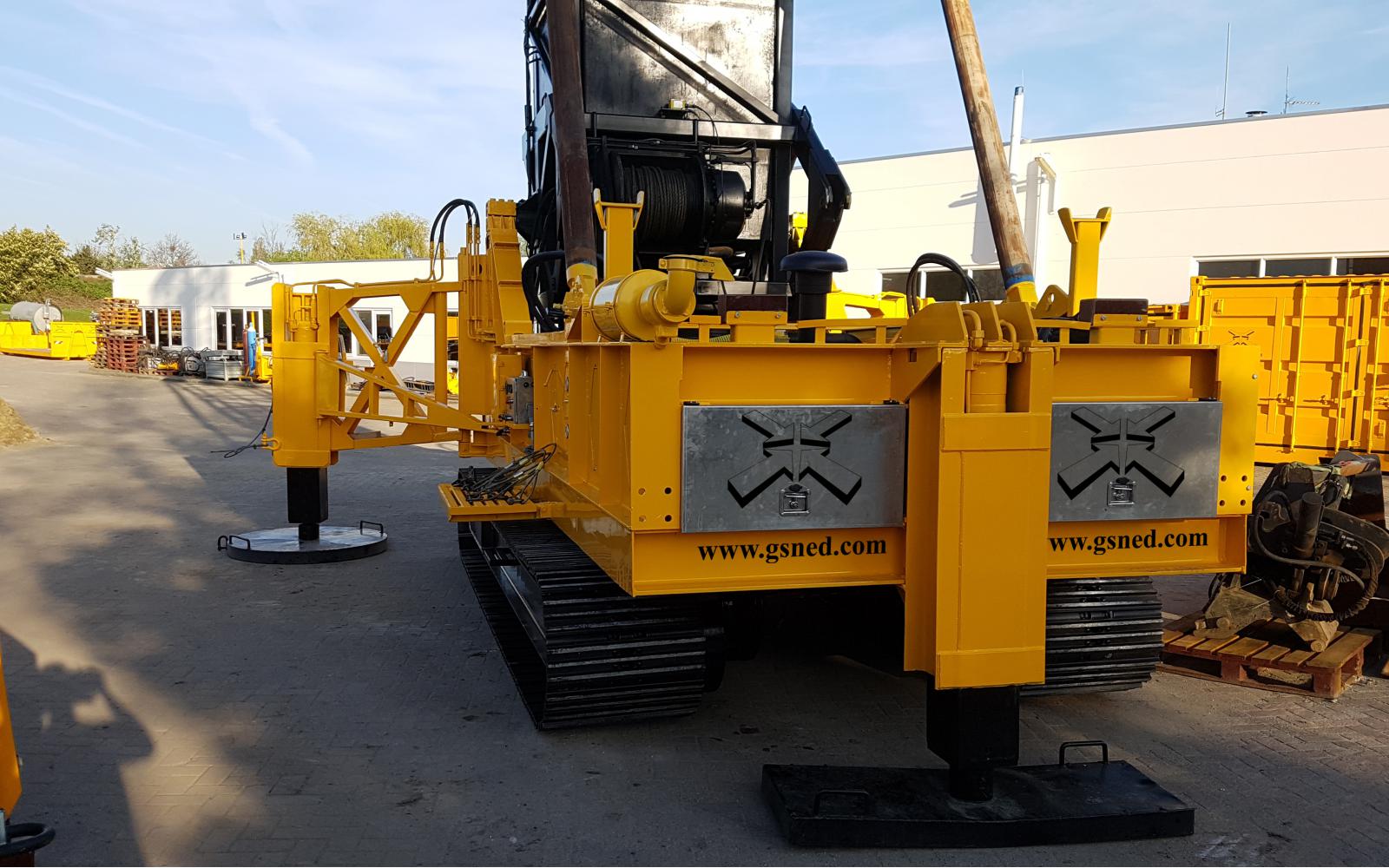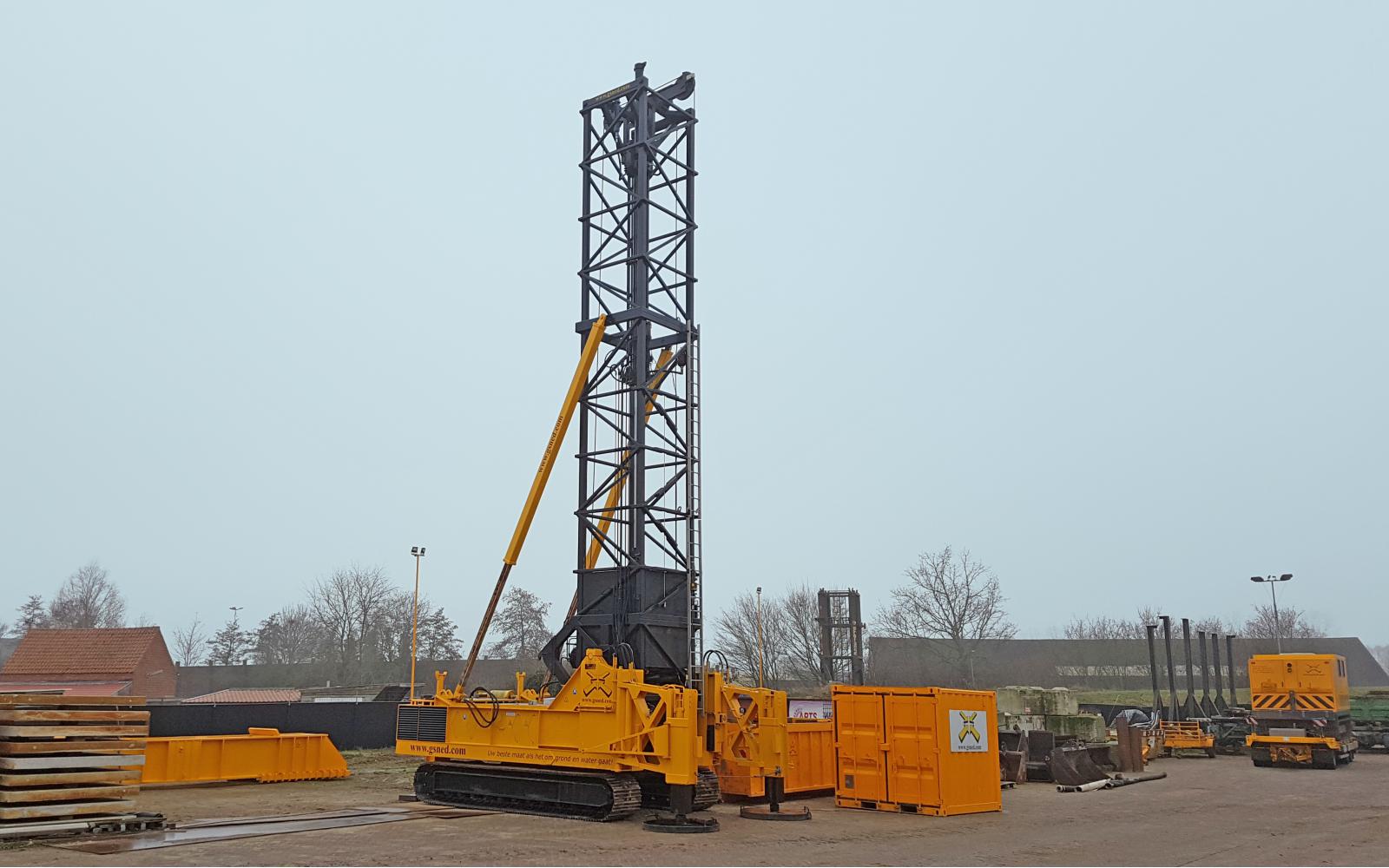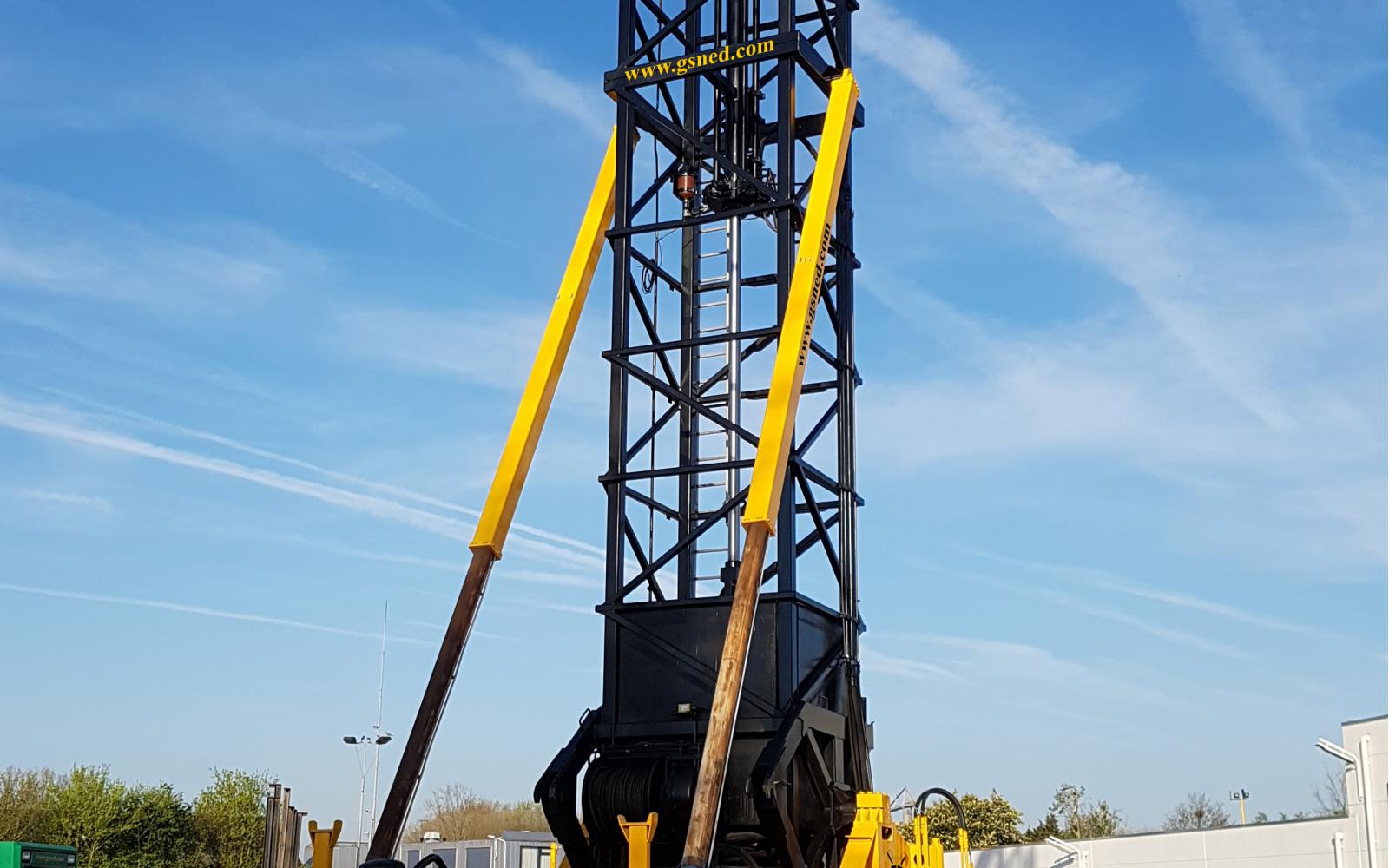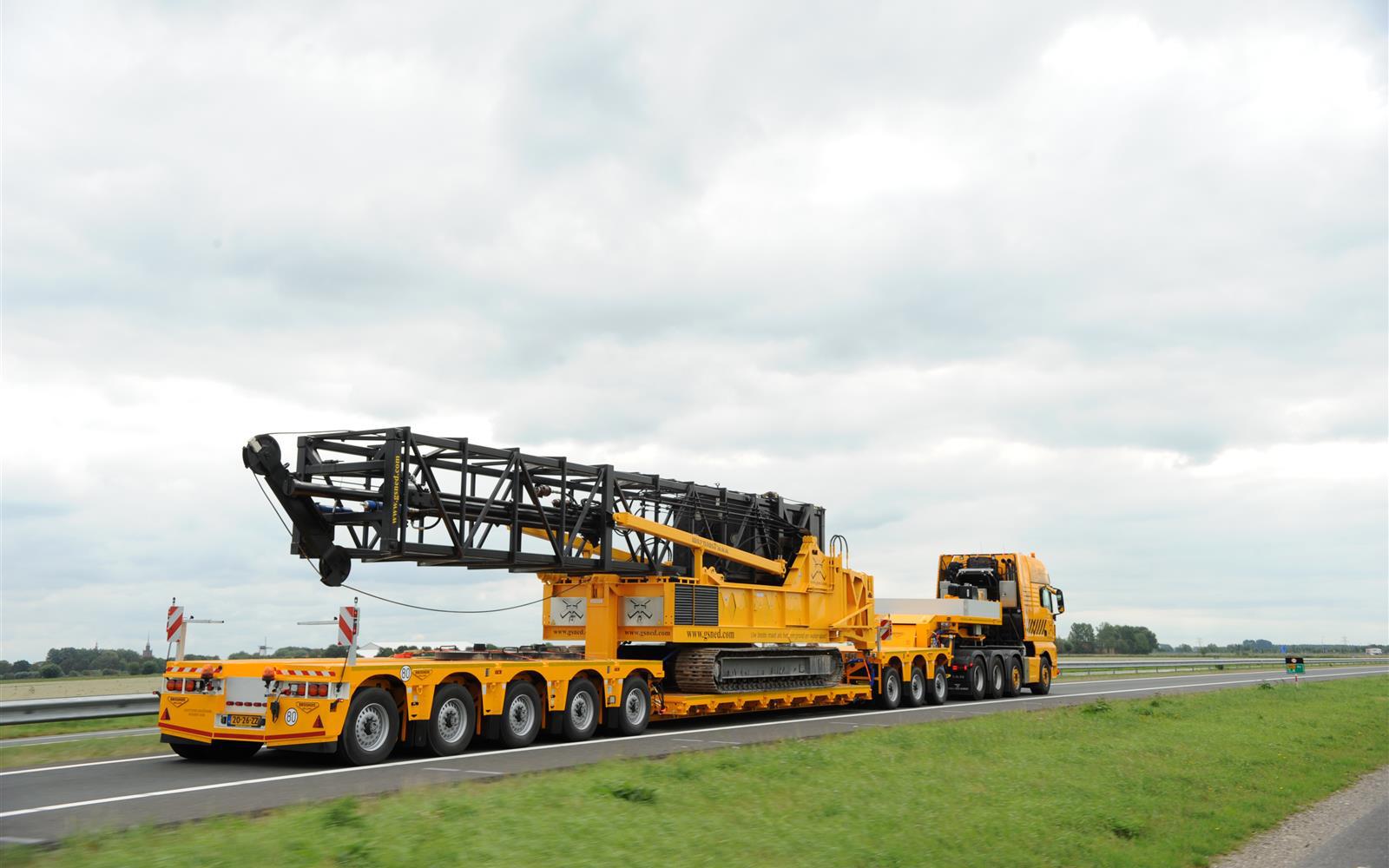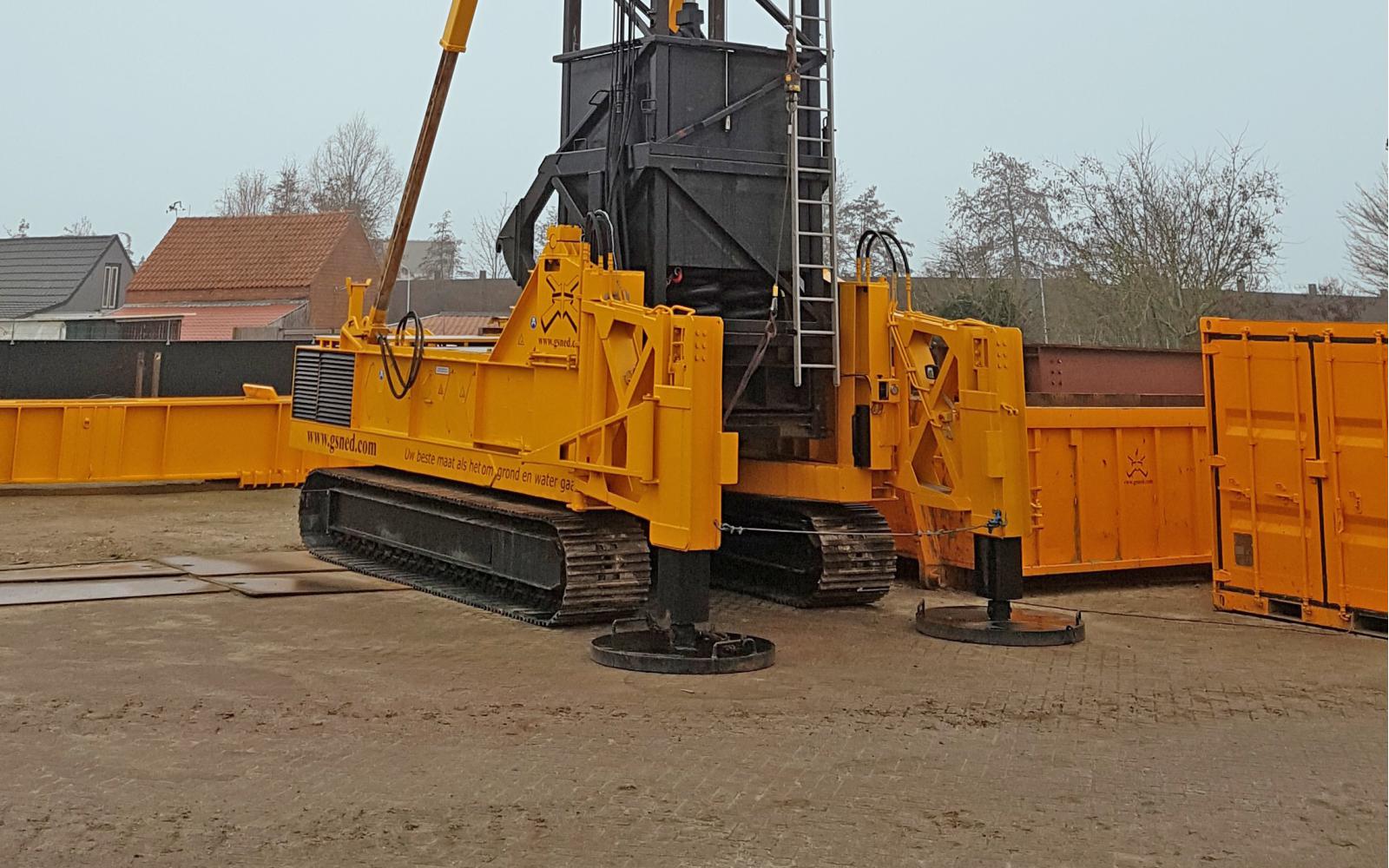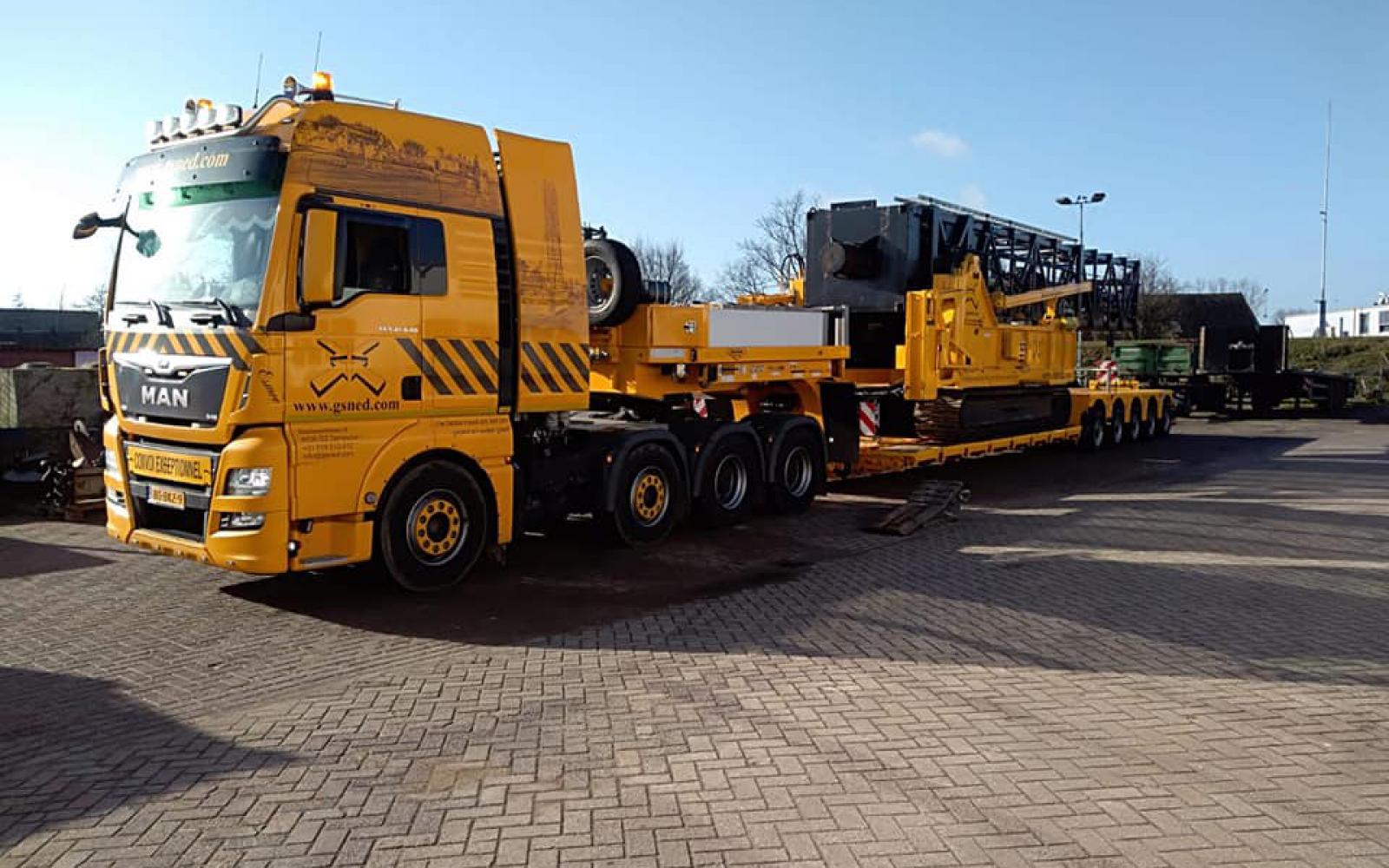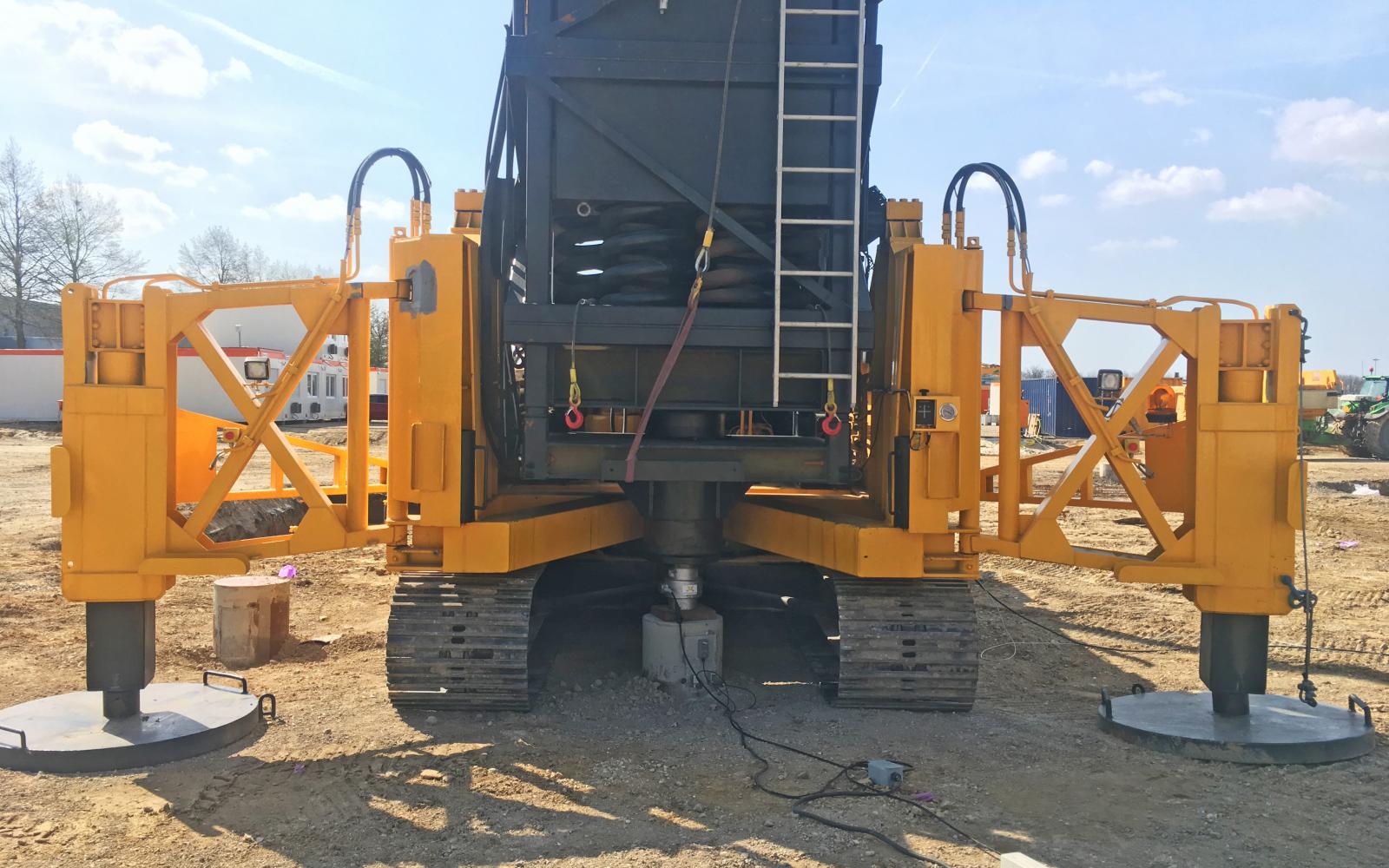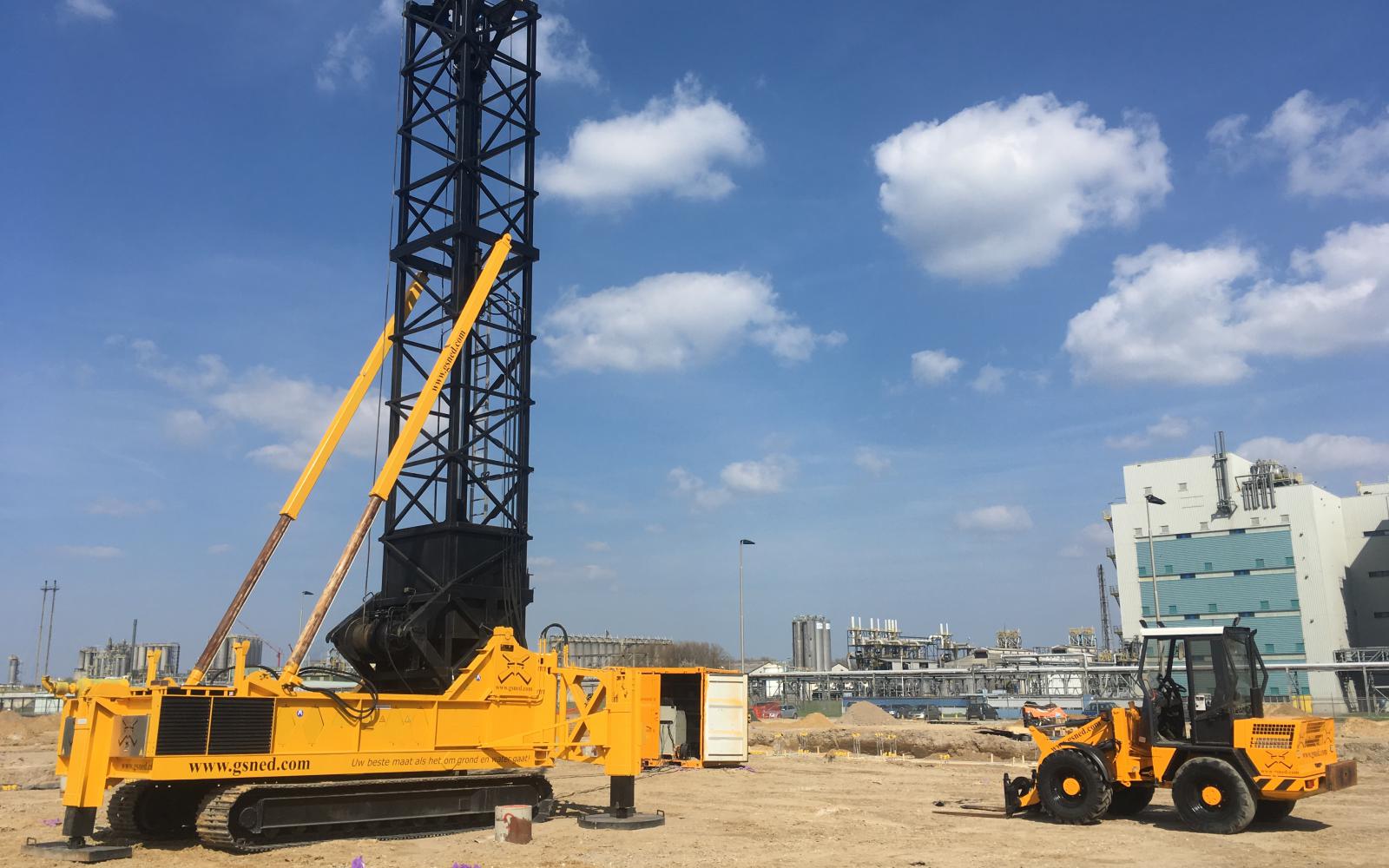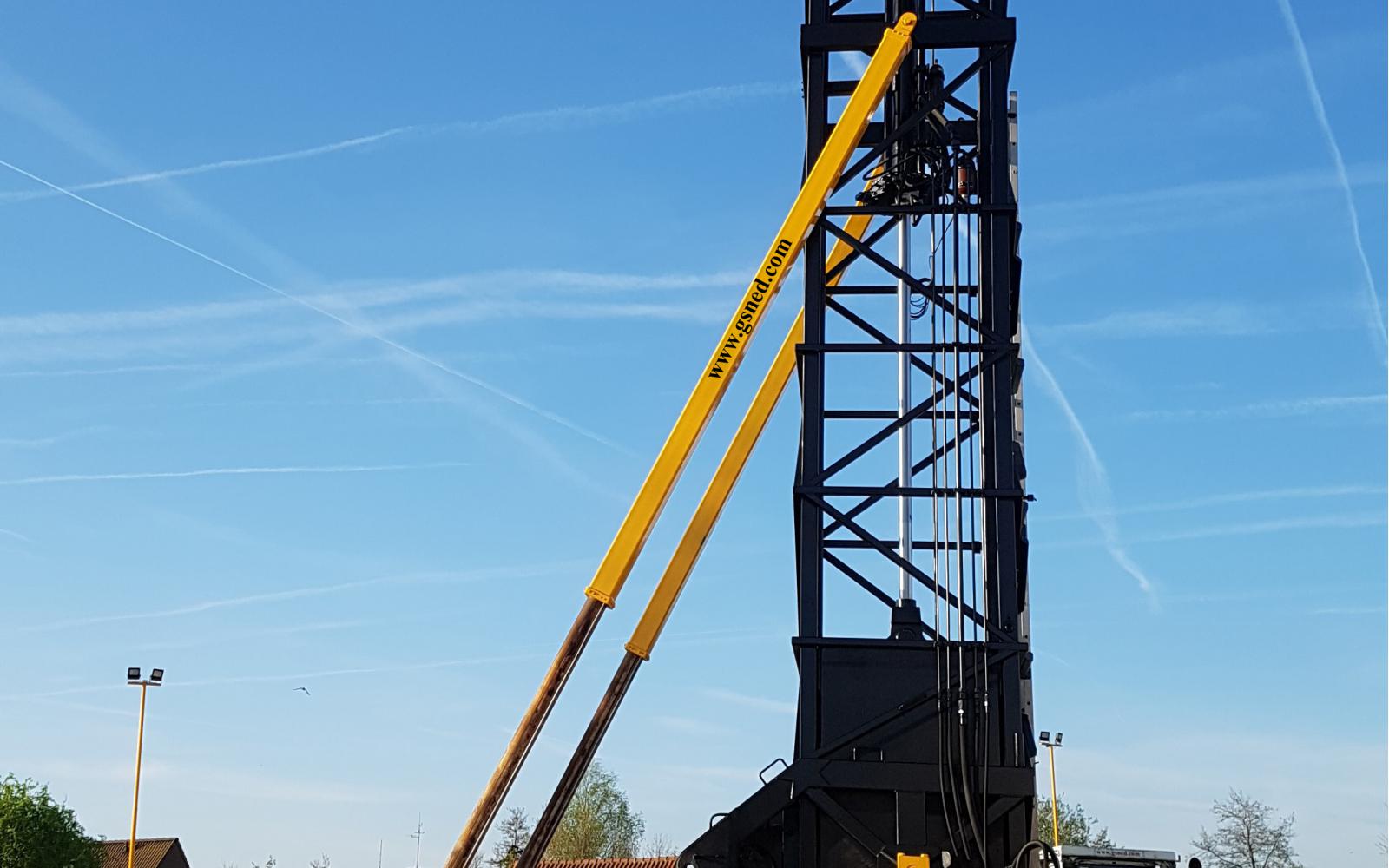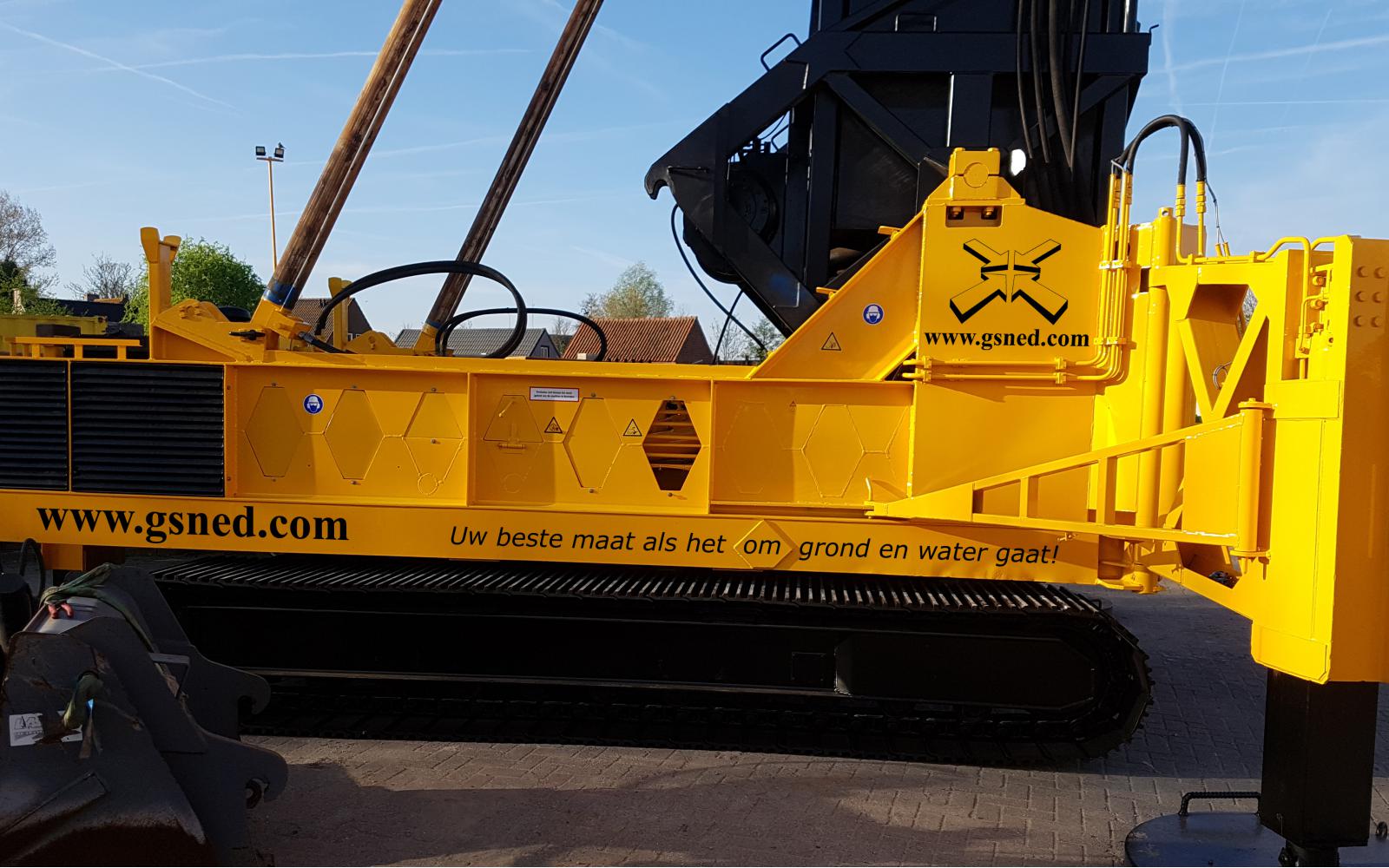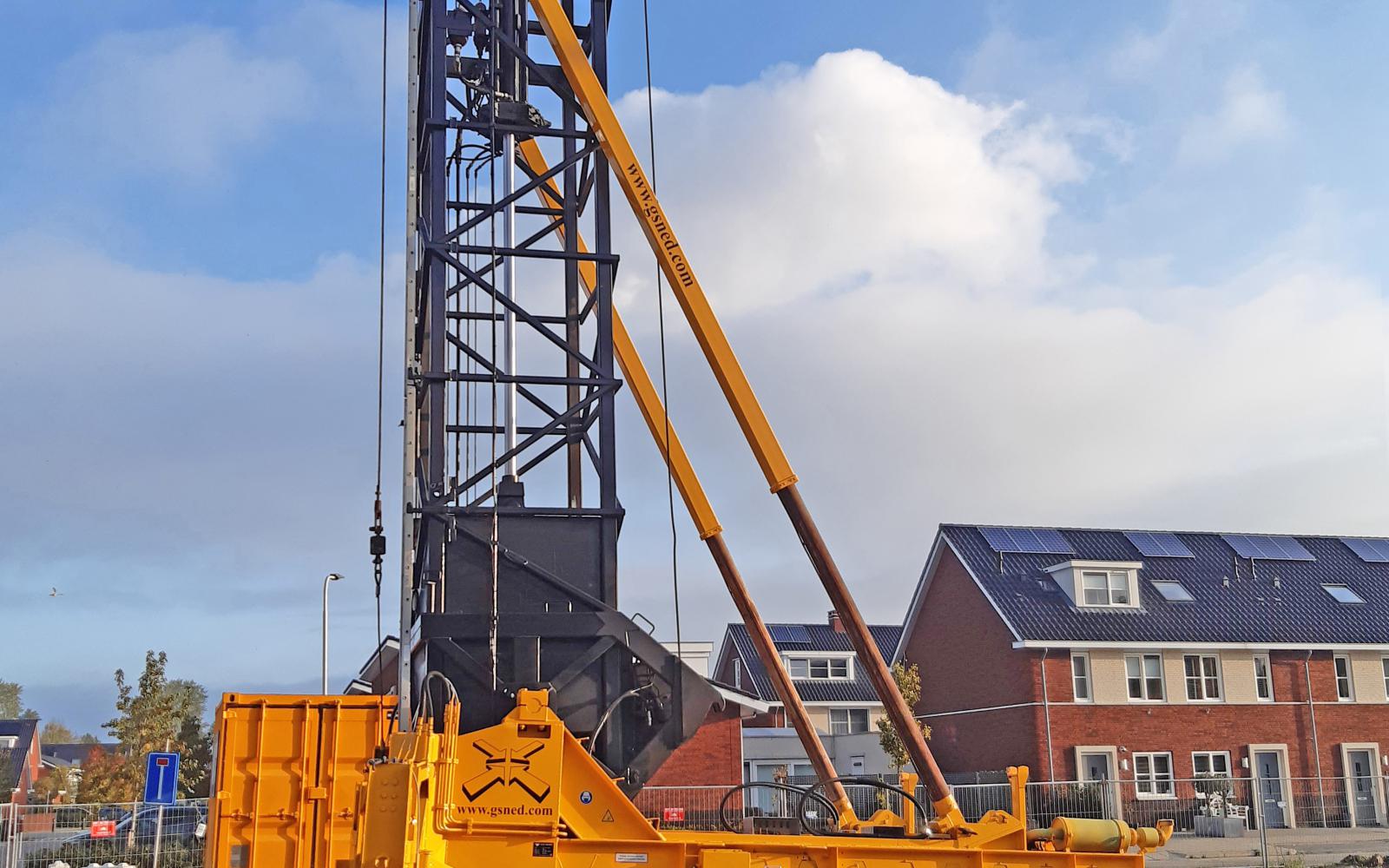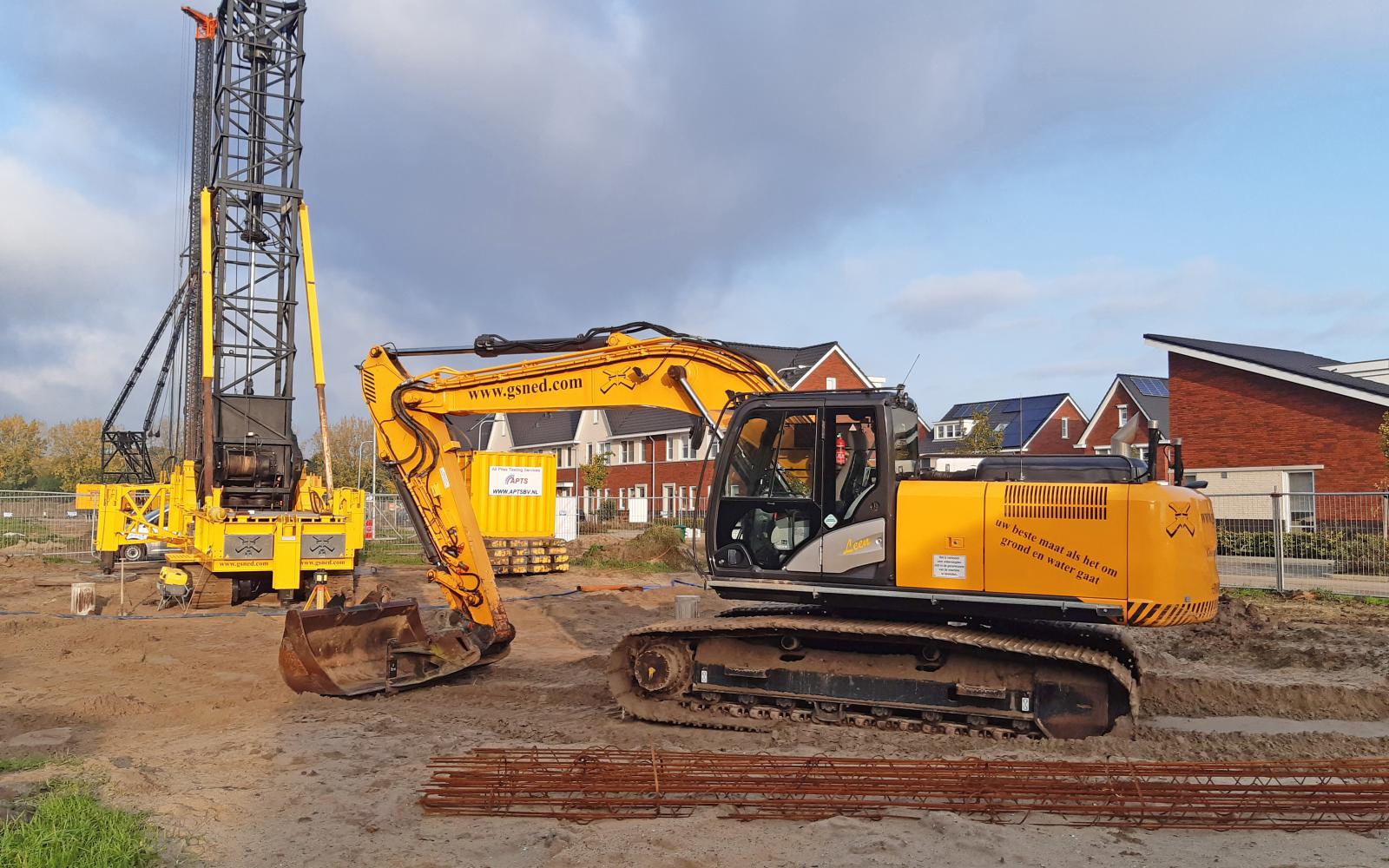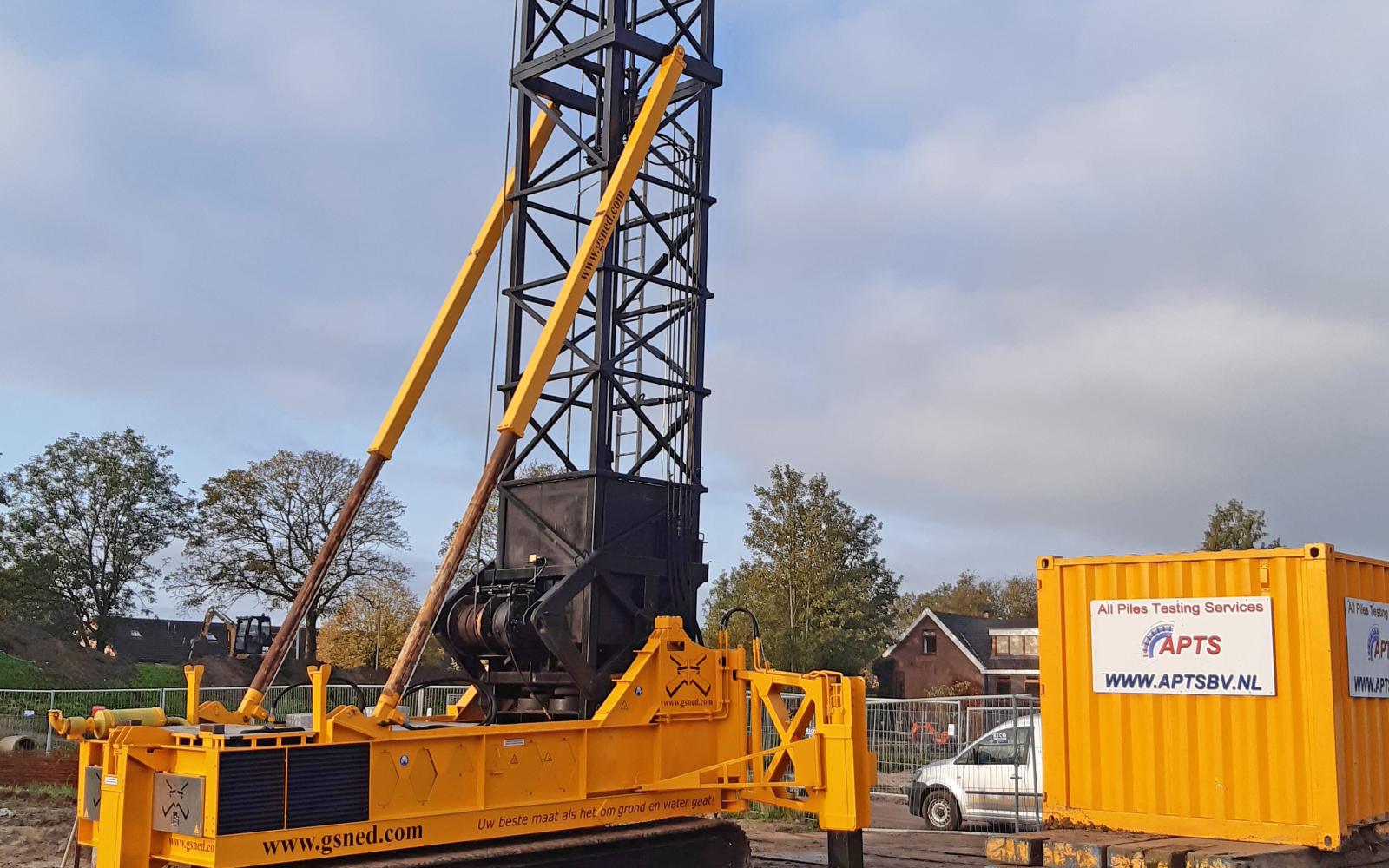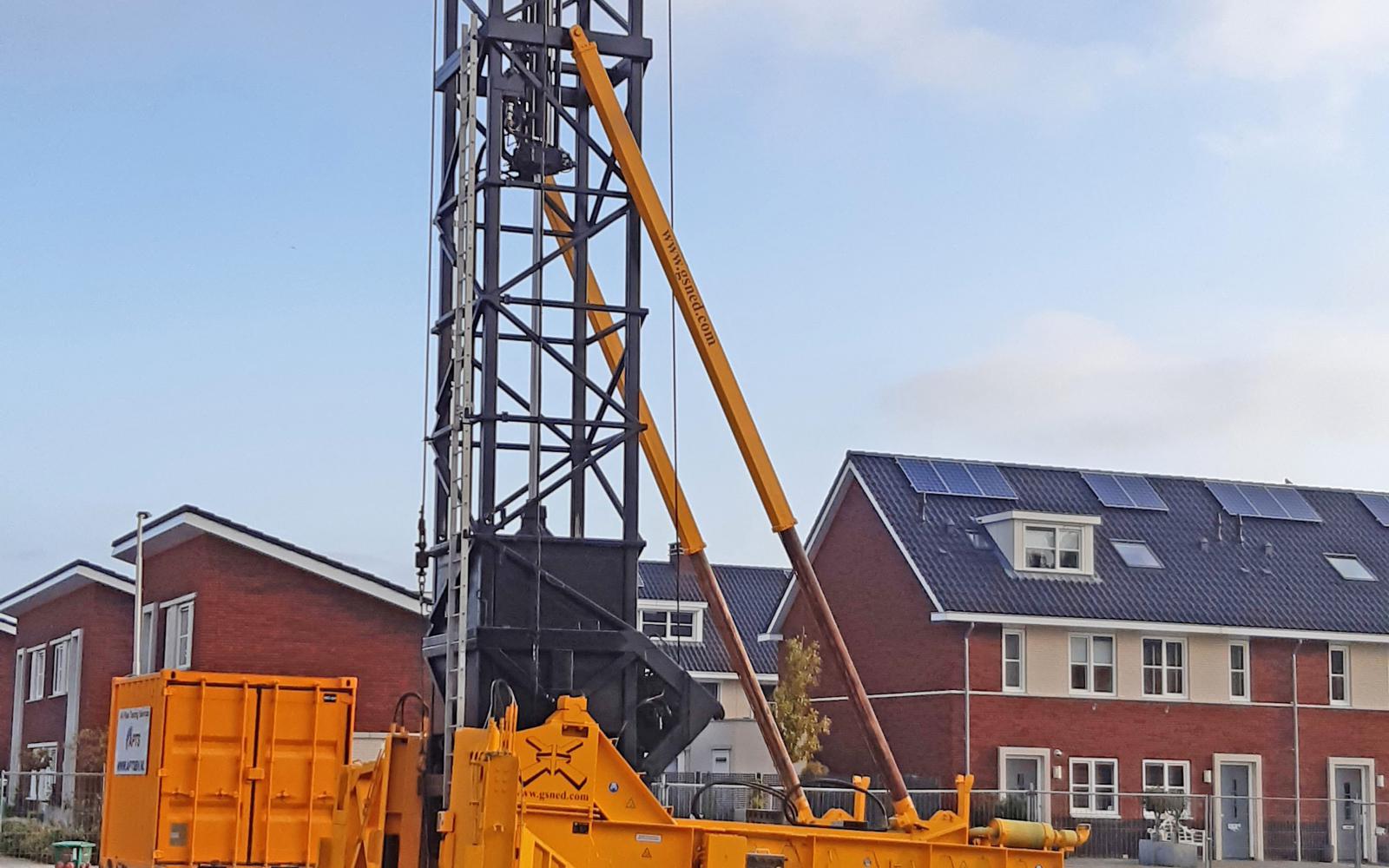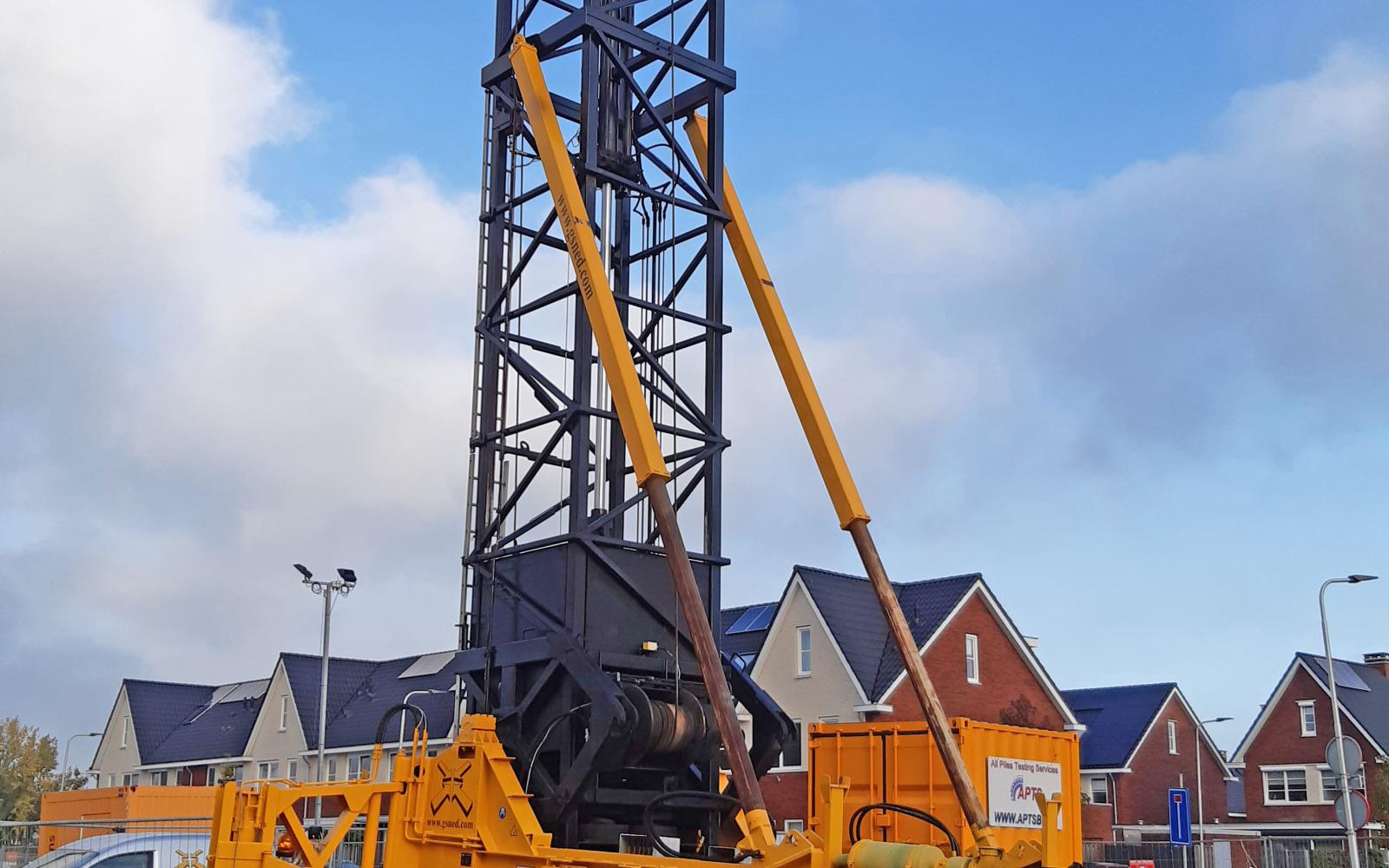Rapid Load Test
The bearing capacity of foundation piles can be tested in various ways, namely dynamic, static and pseudo-static. For the latter, GSNED uses an impressive machine, a so-called 'PSLT machine' (pseudo-static load tester).
In contrast to the statnamic test machine that APTS also has at its disposal, the foundation piles can be tested with the PSLT machine without the use of explosives. This then happens because the machine can drop a weight of no less than 25 tons from different heights onto the foundation pile. The enormous hits that this produces are measured with high-speed cameras and all kinds of sensors that are attached to the foundation pile under test.
At the output of the test, the drop weight is not dropped directly on the pile head itself, because it drops from a pre-calculated height on an HD spring package. This spring package is depressed to some extent by the impact of the falling weight, after which the falling weight is thrown back upwards as a result of the energy present in the spring package. At the moment the dropped weight reaches its highest possible position, it is "caught" in a specially designed capture system. This prevents the drop weight from loading the pile to be tested again in an uncontrolled manner.
Due to the fact that the drop weight is thrown back by the spring package, an optimal duration is reached for the length of the blow. In fact, the length of the blow is initially by first springing in and then springing out of the spring package, twice as long as it is compared with systems without a return mechanism. The deployment of this machine can therefore rightfully speak of a quasi-static test which amply meets the criteria set on the basis of the NPR 7201.
The load coming from the spring package is transferred to the subsurface via calibrated load cell which is mounted on a pile which is to be tested. In order to avoid damage to the test pile as a result of the execution of the test in question, the pile heads of the piles to be tested have been pre-prepared. The same also applies to the test pile itself.
For the execution of a test, the self-propelled test machine is maneuvered exactly above the post to be tested. The pile is then tested in various ever increasing load steps.
As a result of the loads applied to the pile head during the test, it will show a certain amount of head displacement(s). This displacement is also measured electronically using a high-speed camera. In order to minimize influencing the measurement results due to soil movements, this camera is placed at a distance of approximately 10 meters or more from the test pile.
By means of a vibration meter, the vibrations of the camera (which is placed on a classic tripod) are monitored during the test. This avoids mismatches with the camera.
In addition, a reference height will be measured within a radius of approximately 20 to 30 meters from the test pile. This will be done using a digital levelling device. If no existing reference point is available, a reference point will be created. All measured displacements of the pile head will be referred to this reference point.
Finally, the acceleration of the pile head is recorded during the test (in particular, of course, with the load on the test pile).




